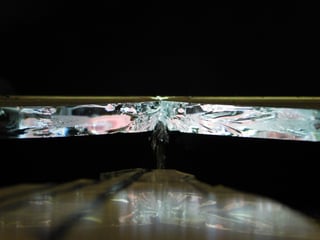While venting glazed spandrels is cited to be a benefit to control heat buildup, several instances of spontaneous glass breakage in spandrel insulated glazing units, attributed to thermal stress, have been reported in vented spandrel cavities used with an opacifier on the inside glass surface.

The implication is that if venting is not an effective solution to reduce thermal stress and the associated need for higher strength glass, then it is desirable not to vent to avoid dirt buildup on the inside glass surface as it cannot be cleaned. The benefit of venting or weep holes must also be evaluated in terms of condensation risk and damage.
The objective of this paper is to address questions related to the real need to vent spandrel sections to control heat buildup. This paper covers a field study that includes monitoring spandrel sections with a combination of single- and double-glazing, three different venting scenarios, and both clear- and opacified-glass scenarios. The data collected will be used to calibrate 3-D thermal and CFD simulations. The computer simulations will allow for cross-validation of the field monitoring data and broaden the relevance of the findings through the investigation of other conditions including different spandrel designs, venting scenarios, and climates.

